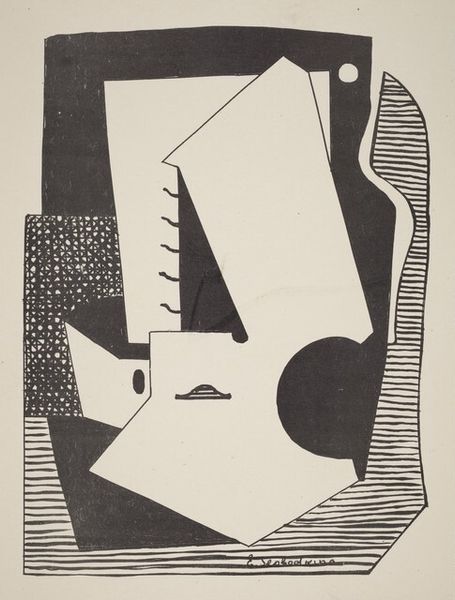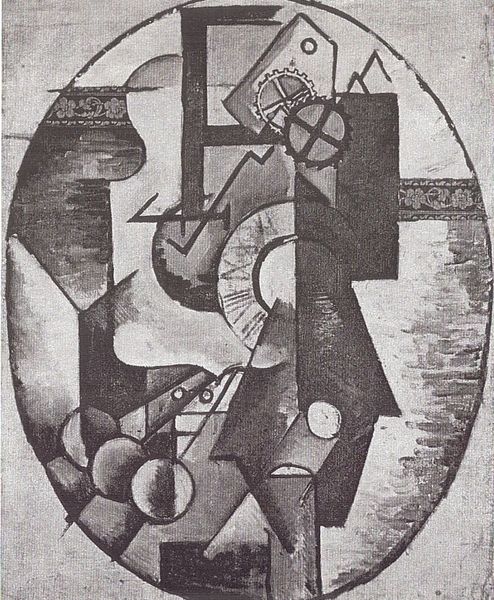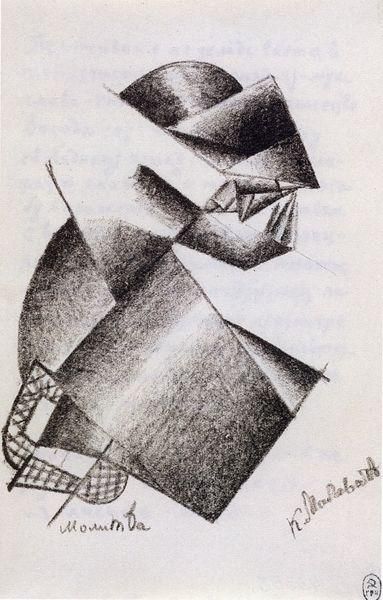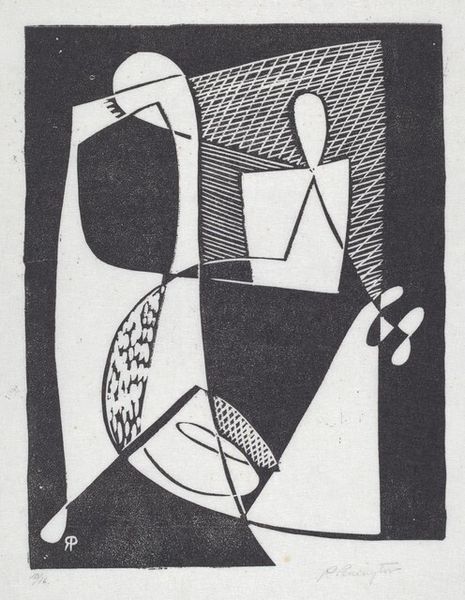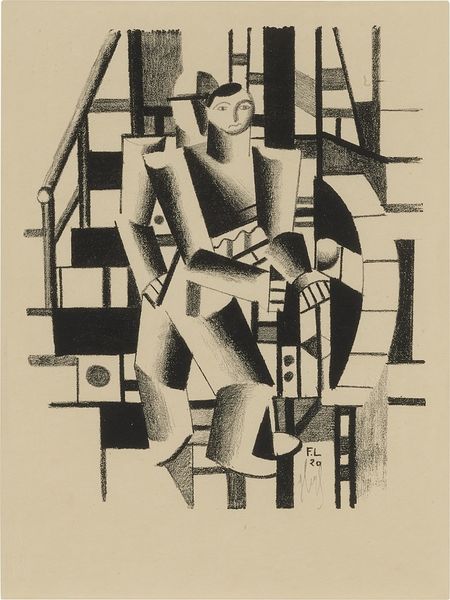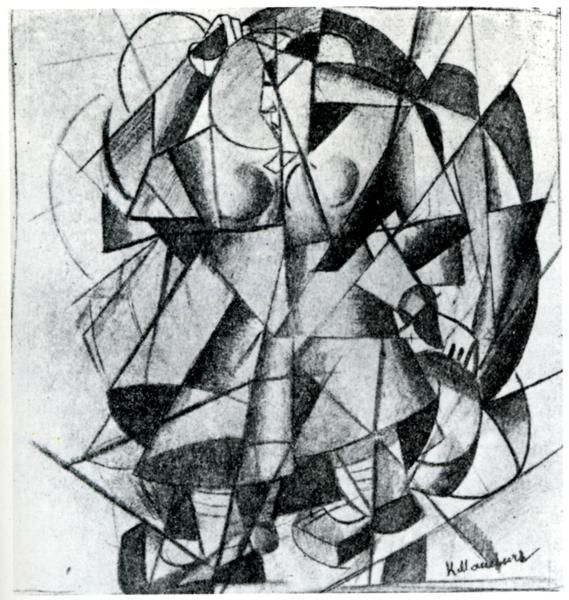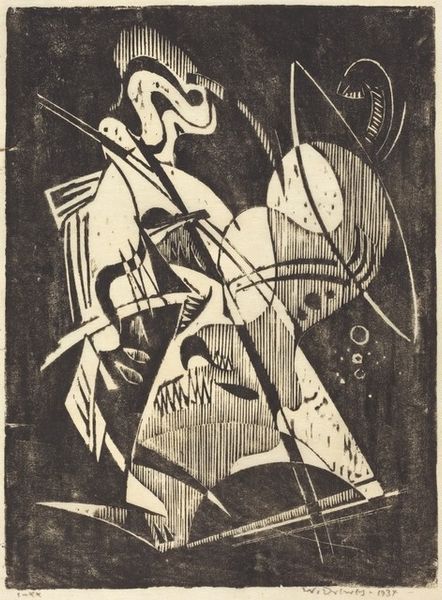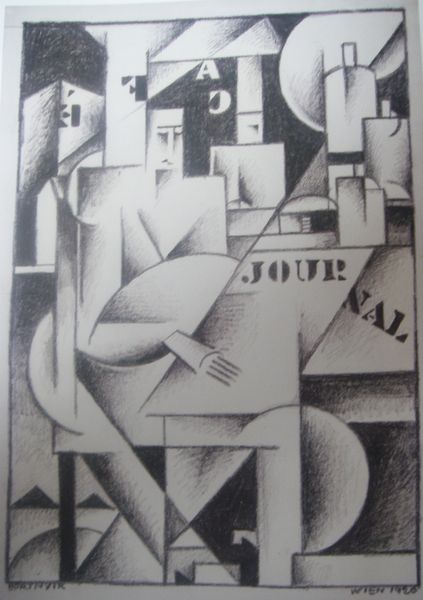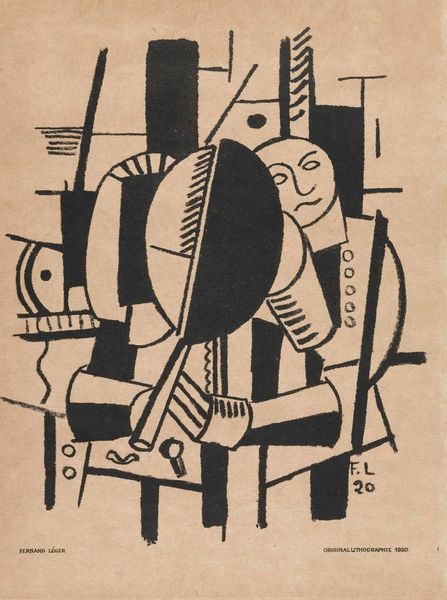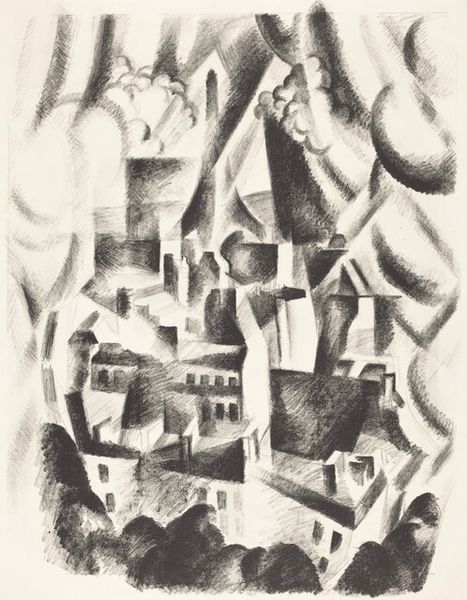
drawing, graphite
#
portrait
#
drawing
#
cubism
#
geometric
#
abstraction
#
graphite
#
russian-avant-garde
#
modernism
Copyright: Public domain
Editor: Here we have Kazimir Malevich’s "Portrait of Ivan Kliun," a graphite drawing from 1913. It’s quite striking, the way he breaks down the human form into these abstract geometric shapes. What do you see in this piece, Professor? Curator: The drawing showcases a fascinating exploration of form. Observe the interplay between the geometric volumes. Note how Malevich constructs the face using cylinders, cones, and planes. It is a portrait, yet simultaneously a deconstruction of portraiture itself. The graphite medium further enhances the emphasis on tonal values, creating a sense of depth through a restricted palette. Editor: It’s interesting that you mention the restricted palette, because I feel like the limitation actually heightens the impact of the different shapes and angles. Is that something Malevich does deliberately, do you think? Curator: Indeed. The absence of color directs our gaze solely toward the structural arrangement. By simplifying the chromatic information, Malevich invites the viewer to engage with the artwork on a purely formal level. Do you notice the careful balancing of positive and negative space within the composition? Editor: Yes, now that you mention it. There's this push and pull, where some forms jut out, while others recede into the background. I had not noticed the interplay before! Curator: Precisely. The artist is concerned not merely with representation but with the articulation of pure, non-objective form. The 'portrait' thus becomes a vehicle for exploring the fundamental principles of visual organization. It certainly gives me much to consider regarding the basics of how artworks create interest. Editor: I see that too; thanks for clarifying so well!
Comments
No comments
Be the first to comment and join the conversation on the ultimate creative platform.

